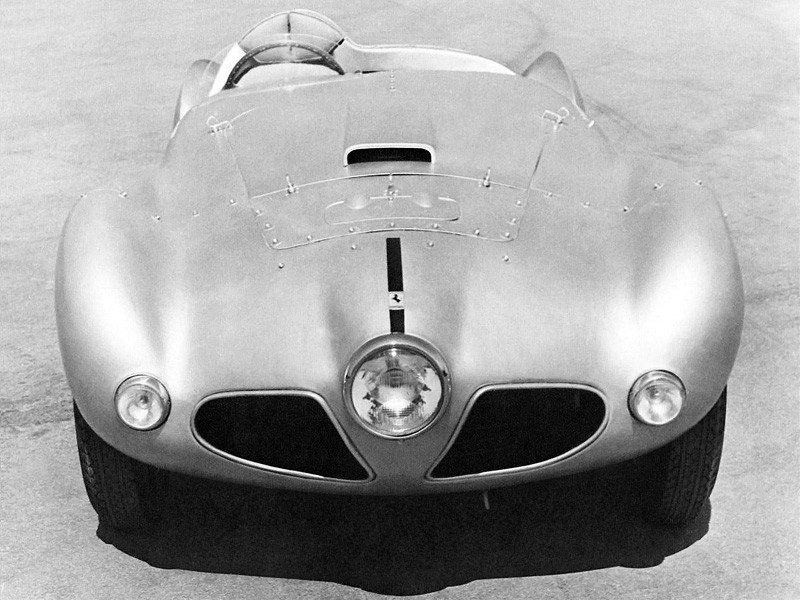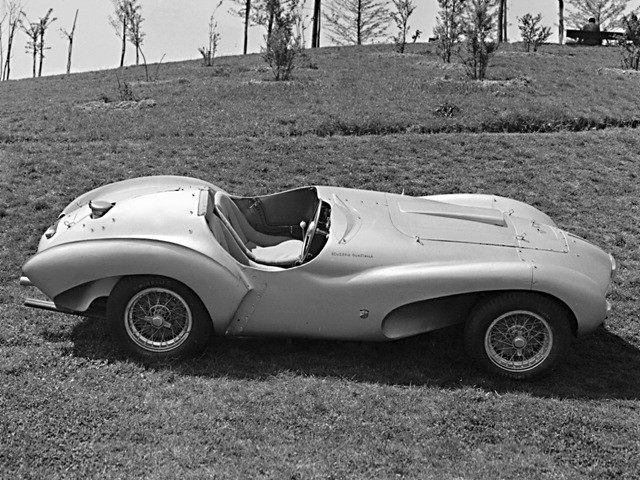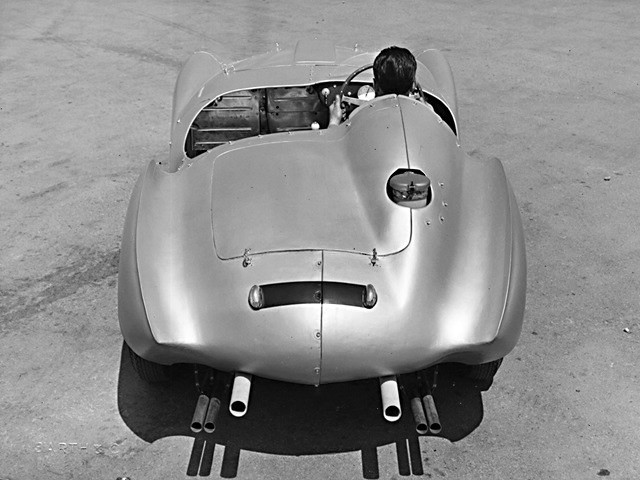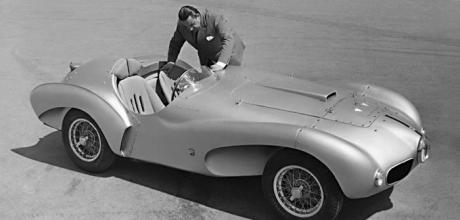1953 Ferrari Abarth 166 MM/53 Smontabile Spyder
The 1953 Ferrari Abarth 166 MM/53 Spider Smontabile. The one and only Ferrari ever to wear Abarth badges. Story by Chris Rees.
OBSCURATI
CURIOSITIES FROM THE AMAZING WORLD OF ITALIAN CARS
For 1953, Ferrari released a second series of its 166 Mille Miglia (MM) for sports racing in the popular sub-2.0-litre sport class. These used the 1995cc V12 engine with new Weber 32IF4C carburettors, producing a healthy 160hp at 7200rpm. The so-called 166 MM/53 was sold alongside the 250 Mille Miglia (3.0 litres) and 340 Mille Miglia (4.1 litres).

Just 13 examples of the 166 MM/53 chassis were ever built. The second of these – number 0262M – was supplied in early 1953 to Franco Cornacchia, the well-known Milanese dealer and one of Ferrari’s best customers. Cornacchia was also the patron of Scuderia Guastalla and his client for the car was an amateur racing driver from Bergamo called Giulio Musitelli.
The chassis was sent to Carlo Abarth to create racing ‘barchetta’ bodywork that would be much lighter than the usual Vignale effort.

Who designed the car? It is attributed to Franco Scaglione of Bertone but some credit is certainly due to the panel beater who honed the shape in aluminium: Giuseppe Manera. It was the highly unusual method of construction that gave the car its nickname: the Spider Smontabile. The word ‘smontabile’ is Italian for ‘removable’ since the body was composed of eight main panels and several more smaller ones, fixed to the chassis by snap fasteners and wire (Abarth was the Italian importer for Dzus), making the panels easily demountable in case of damage during racing.
Scaglione’s distinctive design featured triple front lights, like his earlier Abarth 1500 Biposto, with a single central light sited between air intakes. Also shared with the Biposto were cutaways behind all four wheels, designed to save weight (the whole body weighed just 90kg). Brake cooling was effected by vertical ducts in the rear wings.
Arguably this car formed the basis for Scaglione’s later Bristol and Aston Martin designs for ‘Wacky’ Arnolt.

The spec for chassis 0262M was a 2250mm wheelbase, damping and brakes borrowed from the Ferrari 212 Export, a stronger 340 America rear axle and 15-inch centre-lock Borrani wire wheels. The original engine was the Tipo 117 1995cc V12, while the five-speed gearbox had synchromesh on third and fourth gears.
Racing for Scuderia Guastalla, Giulio Musitelli’s first outing was the Targa Florio on 14 May 1953 (where he came 21st overall and seventh in the 2.0-litre class).
After a hillclimb, he then came third at the Coppa Pasquale Amato in June, followed one week later by the Giro dell’Umbria with Edoardo Drago co-driving (fifth overall, third in class). More solid results followed, and by the time the car came third in class at the Merano Supercortemaggiore in September, its colour had changed from its original silver to red.
The car was despatched to South America for two races in January 1954. Musitelli came second in the Rio Grand Prix but failed to finish the Sao Paolo Grand Prix at Interlagos. On the car’s return to Italy, Ferrari fitted a new 3.0-litre 250 MM engine. Ironically, Scaglione’s original bodywork was ‘demounted’ at this point and changed to a more conventional Scaglietti body.

After being exported to the US, the original body style was reinstated some time later, in which form the car made $847,000 at an RM Sotheby’s auction in Monterey in 2007.
Carlo Abarth leans into the cabin of the only Ferrari he was ever involved in building.


